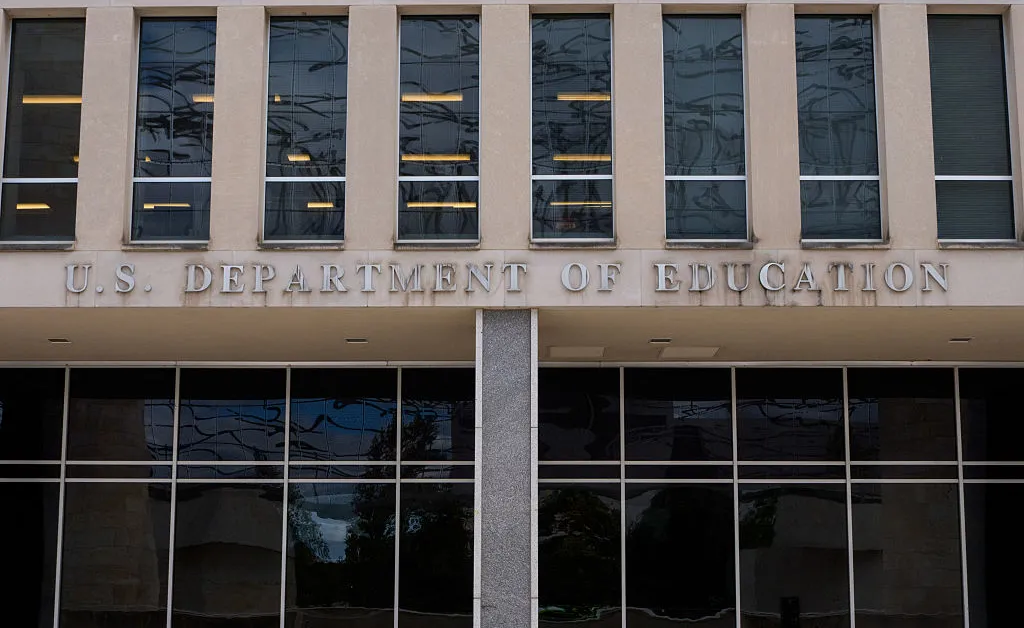The Department of Education is shifting a number of its responsibilities to other federal agencies—a move that education experts say continues the Trump Administration’s efforts to dismantle the department, and that they fear will lead to delays in schools receiving critical funding.
Certain offices serving schools and colleges will be transferred to the Departments of Labor, Interior, Health and Human Services, and State, the department announced on Tuesday. It claimed the change is intended to “break up the federal education bureaucracy, ensure efficient delivery of funded programs, activities, and move closer to fulfilling the President’s promise to return education to the states.”
[time-brightcove not-tgx=”true”]
“Cutting through layers of red tape in Washington is one essential piece of our final mission,” U.S. Secretary of Education Linda McMahon said in a press release. “Together, we will refocus education on students, families, and schools—ensuring federal taxpayer spending is supporting a world-class education system.”
But education experts argue that the shifts would actually increase bureaucracy, and could lead to delays in processing and distributing various forms of funding.
“These are not agencies with expertise in these areas,” says Kevin Carey, the vice president of education and work at the nonpartisan think-tank New America. “Taking education programs and putting them in agencies that have no expertise in education is going to make those programs function worse.”
Here are some of the ways that the new changes could affect schools and students.
What services are being transferred to other agencies?
Several offices, which are tasked with overseeing a wide range of programs, are being transferred to the four other federal agencies. For instance, a swath of elementary and secondary education programs are being shifted over to the Department of Labor, including the Title I program that provides funding to school districts serving low-income communities.
Many programs managed by the Department of Education’s Office of Postsecondary Education (OPE) are also being transferred to the Department of Labor, including TRIO programs, which provide services for people from disadvantaged backgrounds. Other impacted programs include grants dedicated to supporting Historically Black Colleges and Universities and those intended to prepare students from low-income households for a postsecondary education.
Additional changes include transferring the Office of Indian Education over to the Department of the Interior and shifting a child care grant program for college students to the Department of Health and Human Services.
Read More: What Does the Department of Education Actually Do?
How could this affect schools and students?
Education experts tell TIME that the restructuring could disrupt the flow of disseminating funding and services from these programs to eligible educational institutions.
Jonathan E. Collins, an assistant professor of political science and education at Columbia University’s Teachers College, says he is especially concerned about how this restructuring could lead to delays in school districts receiving funding under Title I programs.
“You’re asking people to perform jobs that they’ve never had to do,” he says. “You’re talking about the Department of Labor now suddenly being responsible for ensuring that the funding that is authorized by Congress gets sent to the state education agencies and local education agencies. The Department of Labor is not used to transferring money to local bureaucratic agencies in this way; the Department of Labor is used to handling more individualized service provisions—they are handling, for instance, unemployment benefits.”
“This is a completely different process of funding dissemination,” he continues. “The thought of that raises questions as to whether or not this can be done as seamlessly as the Trump Administration suggests.”
Collins also notes that the Department of Labor is a “chronically underfunded agency,” and that shifting more responsibilities to an agency that is already struggling could further delay staffers’ ability to provide these programs in a timely fashion.
“I think you’ll see school district leaders having to make phone calls, send letters, maybe even be more aggressive and actually make visits to Washington, D.C., to find out why payments aren’t coming in on time,” Collins says. “You’re going to get state education agencies who are also getting sent to voicemail, trying to figure out why funding that should be coming through into their state and flowing through into their districts is not coming at the point in time when it’s supposed to.”
Experts also expressed concerns that the process of disseminating funding or services may change once they’re moved to other federal agencies. Nicholas Hillman, a professor in the School of Education at the University of Wisconsin-Madison, says he wonders, for instance, if a college that is seeking funding from an OPE grant will now be asked different questions and will have to undergo a different review process, which could potentially create “additional hurdles” for colleges that are “already stretched pretty thin.”
The specifics of how these programs will operate under new federal agencies are unclear. But education experts stress that any disruptions would impact students.
“Ultimately, students are affected when these programs don’t work well,” Carey says. “Just because students don’t feel the effect a week after these programs are moved doesn’t mean it won’t ultimately hurt student learning in the long run. It will. These are important programs.”
Will there be layoffs at the Department of Education?
The Department of Education didn’t say whether this restructuring will lead to layoffs, but experts worry that those are on the horizon.
President Donald Trump has called for shuttering the Department of Education since he took office for his second term. In March, he signed an Executive Order aimed at dismantling the department, directing McMahon to “return authority over education to the States and local communities.” In July, the U.S. Supreme Court allowed the Trump Administration to continue laying off nearly 1,400 Education Department employees.
Experts have denounced the Administration’s actions, saying it’s harming students, especially those who need federal education support the most.
“The one thing that unites almost everything the U.S. Department of Education does is that all of their programs and regulations are designed to protect students who are vulnerable, to fill in inequalities that exist throughout our education system, to support people who wouldn’t be supported otherwise,” Carey says.
This effort to dismantle it “is time and energy that ought to be spent protecting students who are vulnerable,” he continues. It’s “time and energy that should be spent helping students learn.”
The post What the Trump Administration’s Latest Moves to Dismantle the Education Department Mean for Schools and Students appeared first on TIME.




